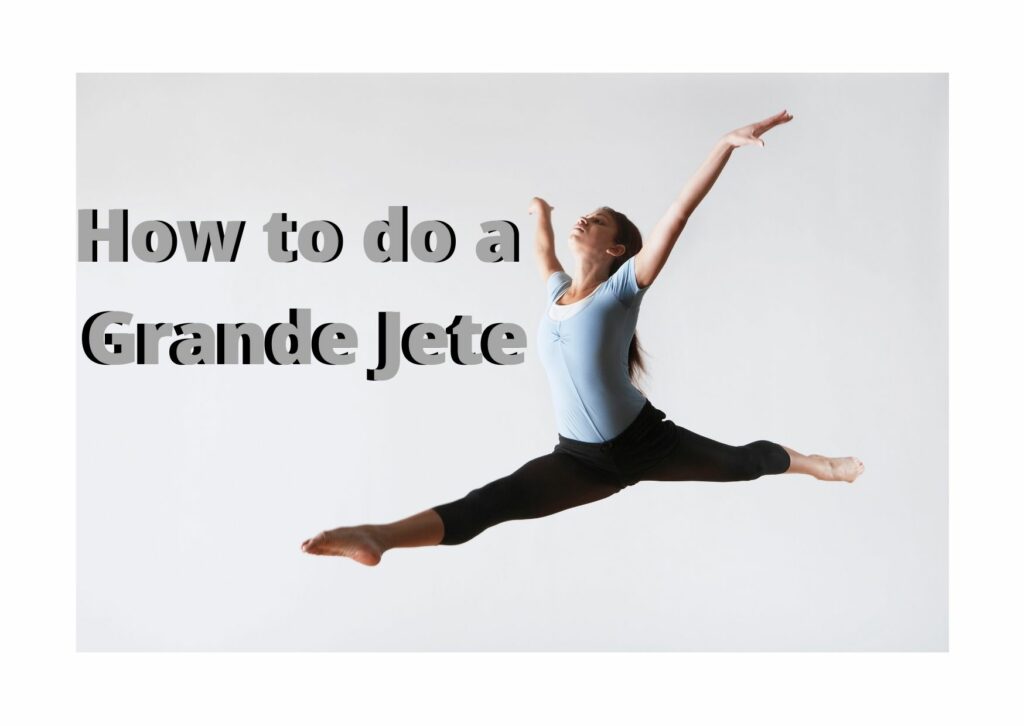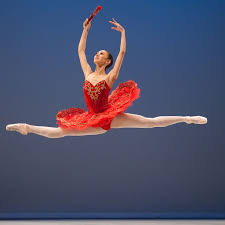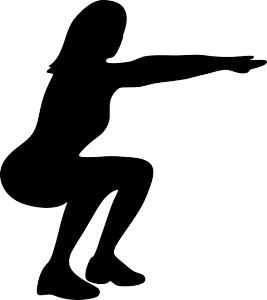In this article, we are going to look at how to do a Grand Jeté and how to improve your leaps.
A Grand Jeté is an awesome-looking ballet trick or movement in which the dancer leaps into the air and does a split. If done properly, it looks as though the dancer is hovering in the air for a second or two.

The question is how to do a grand jeté, also known as a split jump.
The correct spelling for this in French is Grande Jeté, but most people forget the e at the end of Grande. For the sake of this post, it will be called a grand jete.
The Grand Jeté is a show-stopper if done correctly, but if not, you could strain your body if you don’t use the right muscles. Many different dance forms use the Grand Jete, including gymnastics.
The grand jete is just one of an entire family of movements in which the working leg is thrown.
How To Do A Grand Jete Training
In grand jete the initiating leg is thrown to 90 degrees and is immediately followed by a similar throwing of the supporting leg, creating the image of an arabesque or attitude suspended in mid-air.
Many dancers strive to achieve a full split mid-air, but dancers need to remember that they will never achieve a full split in the air if they cannot do a full split on the ground.
To be able to master the grand jete, you need to first of all train your body correctly.
To prepare for leaping, you need to do the following:
- Increase your flexibility. A greater range of motion will allow for more splits in the legs. Stretch safely when you are warm and be sure to work on the hip flexors (The muscles in front of the hip that lengthen when your leg is extended behind) as well as the inner thigh and the hamstrings.
- Increase the strength in your hamstrings and glutes. Many leapers have trouble getting the back leg to lift in a grand jete. The muscles down the back of the leg (hip extensors) have to fire strongly and quickly for an explosive leap.
- Work on core strength and alignment. This allows the body to move through the air in one piece so that the energy can be directed to powering the leap and not holding things together.
- Work on executing a good plié, particularly in the landing of your jumps. This includes paying attention to the foot and ankle and making sure you are not pronating or rolling in.
These are some stretches to start with. Make sure you are warm first, so either do these after your class, after exercising, or even after a hot bath.
Stretch Number 1:
Stretch your legs out in front of you and flex your feet. Try to flatten your body against your legs. Aim your belly button towards your knees. If you are stiff, take it slowly and hold for thirty seconds at a time. Do this daily and you will see an improvement.
Stretch Number 2:
Train your body to do a split, because if you can’t do a split on the floor, you won’t be able to show a good one in the air. Kneel and extend your right leg forward until it is completely straight in front of you, with your heel on the ground. Lean down and place your fingers on the floor to either side of your body. If this burns or pulls, hold this position. If not, scoot your heel forward until it does, and then hold.
Repeat with the other leg. Aim to keep your hips square for more stretch of the back quad.
You will need to do this stretch each day until your legs are both flat on the floor and you are sitting comfortably in a split. This may take several weeks. Go slowly and carefully to avoid pulling a muscle.
Stretch Number 3:
Once you are in the splits, you will need to gently push your stretch a little further. Go down into the splits, and once you are feeling comfortable here place a pillow or yoga block underneath your front foot. When this doesn’t burn anymore add another cushion. Now try adding a pillow or two underneath your back foot. Do this one very carefully and stop if you feel any pain besides the normal burning pain.
Switch Legs and repeat.
Now for some strengthening exercises:
Strength Exercise Number 1:
You will need to strengthen your gluteal muscles (bottom) in order to achieve spectacular leaps.

Start by kneeling on all fours.
Keep your knees beneath your hips and your hands directly underneath your shoulders. Tighten your stomach as you breathe in and bring your right knee to your chest. Breathe out, point your right toe, and push your right leg out behind you and as far up into the air as you can whilst also bringing your chest upward.
Hold those stomach muscles so you don’t overextend your spine. Make sure your glutes are contracted to help you achieve height. Aim to do 30 or more reps on each leg.
Strength Exercise Number 2:
This exercise will strengthen your core.
Lie down on your back, and rest your feet flat on the floor with your knees bent upwards to the ceiling. Make sure to keep your stomach tight and straighten your right leg so that it points up towards the ceiling. Breath out as you use your left leg to push your hips upward until your body is straight. Inhale as you lower your hips almost to the floor and breathe in again as you push up. Repeat this 30 times on each leg. If you can’t, start with a smaller number and build up gradually each day.
Strength Exercise Number 3:
Strengthen your jumping muscles. The most effective way to do this is to squat down like you are sitting on a chair, then jump up and land in a squat again. When you squat, take care not to let your knees go too far forward over your toes. Legs should be in a 90-degree angle. Push your bottom back and keep your spine as erect as you can during all your squats. Your knees are back behind your toes.
How To Do A Grand Jete
A grand jete starts off with a grande battement devant, then you propel yourself off of the floor by pushing off of your well-bent back leg while attempting to do a grand battement derriere with the back leg in the air.
A grand jete could also start with a developpe or as some call it, a flick leap, but I personally prefer to teach it from a grand battement first.
Make sure to fully stretch the back leg in the air, as this is the biggest fault and it can ruin the line of your jump unless, of course, you are doing a jump with an attitude leg at the back intentionally as you can see at the end of the second video below.
When landing your jump, make sure to do so on a bent leg and your landing should be soft and controlled. After a big leap, you always need to bend well so that your knees and legs can safely absorb the shock. When you land the back leg should aim to stay straight and well lifted.

More Tips For Dancers:
Here are some more things to think about (like there aren’t enough already):
- Engage the muscles in your core. This is essential for freeing the limbs for movement and safely executing the jumps and leaps.
- Conserve your energy on the preparatory movement before the jeté, using it only to build a bit of momentum.
- The initiating movement in a grand jete is a grand battement, which begins with a strong brush of the foot. Don’t neglect this opportunity to gain power from the floor.
- The back leg must follow immediately with a grand battement, disengaging powerfully from the floor. This is what directs the movement forward in space. Until now the jump has been primarily upward.
- The upper body should be strong but without tension. Having strong core muscles and supporting the arms with the back (and not the shoulders) will facilitate this.
- Maintain a sense of lift on the landing of the jeté, rolling through the foot (toe-ball-heel) and descending into a supported plie.
- Be aware of your breath during a jeté. Many dancers find that inhaling as the leap is initiated is beneficual for feeling suspension in the air, but again different strokes for different folks.
- Visualize yourself performing the movement. Play the movement in slow motion in the mind’s eye reinforcing many of the concepts found above.
Using Imagery
If you are a visual dancer, you may enjoy using imagery when executing your grand jete. Different images work for different people. Here are some examples that Eric Franklin likes to use:
- Imagine every part of the body suspended from strings like a marionette.
- Imagine the leading foot sucking in the air, which shoots through the legs to be forcefully expelled through the back foot.
- Imagine the body or pelvis being carried along by a supporting force such as the flying carpet.
- For explosive leaps imaging being coiled up like a spring with energy stored for a powerful release.
- After the first battement, imagine this frong leg being pulled by the toe while the back leg streams behind like ribbong on a rhythmic gymnast’s batton.
There is nothing better than a video to explain how to do a grand jete.
Here is a video demonstrating how to do a grand jete done with a professional dancer.
One thing they fail to mention in these videos is that when you are in the air, to achieve the hovering effect, you have to feel like you are doing another split in the air at the height of the jump. You should aim to split your legs even more here so that you get the feeling of staying in the air longer.




I never knew how involved ballet could be. It certainly does have a beautiful and graceful look and feel. Stretching is critical and something to be patient in attaining as the exercises show. Being able to make your body accept the challenge is beneficial only with determination and practice. It may look easy but it is certainly not. Practice makes perfect is my outlook.
Yes and the practise amounts to years of it. Thanks for the comment Ronald.
I love watching ballet and dancing in general. I always hear the language the dancers and announcers use and for the most part am clueless as to what many of the motions are. Thank you for sharing this training with us. While I don’t think I would ever be able to perform this move on my own (without having an ambulance close by), it is very cool to watch.
Just takes lots of practise, dedication and strength, then the Grand Jete becomes a breeze and fun to do, as you feel like you are flying.
Hi, As I read your article you transmit the passion you have for dance, I am not a dancer but with the level of detail you gave , I can imagine the amount of work and dedication one should devote to be able to perform the Grand jete, and I must say I can relate to that in the sense that wanting to do something of worth requires determination, patience and this passion that you have,
Hpoe to read you again soon
Thanks Javier. You are right, anything worthwhile is worth waiting for.
I never realized how much training goes into ballet. I am sure just from reading your post, that if a person is not correctly trained, they could potentially hurt themselves. I know personally I don’t think I could ever do any of that, I don’t think I am flexible enough. Is flexibility a major component of ballet?
For sure Trisha. Without flexibility, the dancer cannot be fluid and even her Grand Jete will look very stiff.